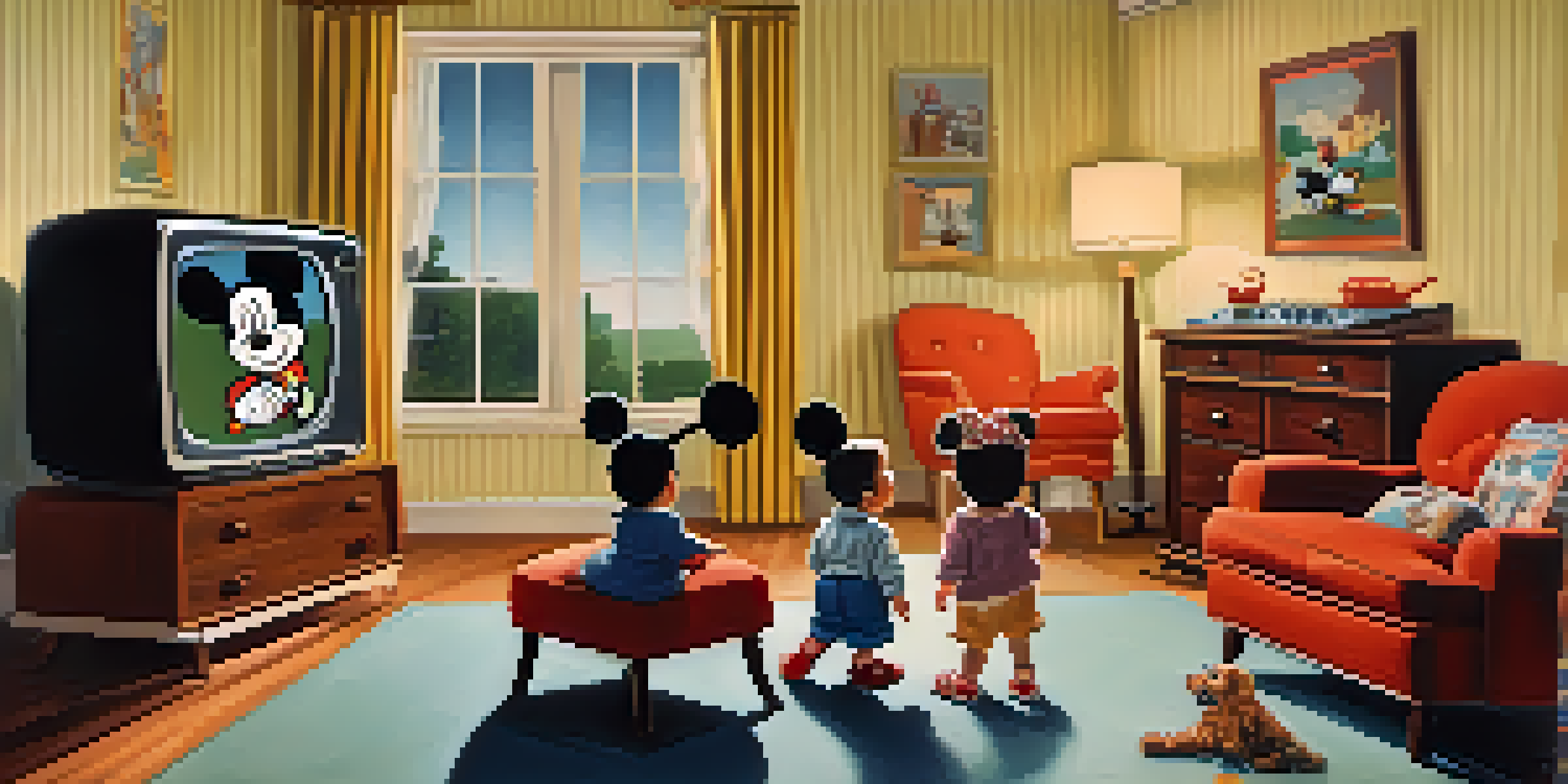Animation in Television: The Evolution of Animated Series

The Birth of Animation: Early Beginnings on TV
Animation made its television debut in the late 1940s, bringing characters like Mickey Mouse into living rooms across America. These early shows were often short segments, showcasing animated shorts that captivated audiences. The combination of storytelling and visual art opened a new realm for creativity that traditional live-action couldn’t match. As technology improved, so did the quality and complexity of animated series, paving the way for future innovations.
The Golden Age: Iconic Shows of the 1960s and 70s
The 1960s and 70s marked a golden age for animated television, birthing beloved classics like 'The Flintstones' and 'Scooby-Doo.' These shows not only entertained but also reflected the cultural zeitgeist, often incorporating humor that appealed to both children and adults. The animation style evolved, becoming more colorful and dynamic, which helped attract a larger audience. This era laid the groundwork for the acceptance of animation as a legitimate form of entertainment.
Animation's Evolution on TV
From its humble beginnings in the late 1940s, animation has transformed into a mainstream form of entertainment, captivating audiences of all ages.
The Rise of Saturday Morning Cartoons
In the 1980s, Saturday morning cartoons became a cherished tradition for kids across the nation. Networks would dedicate entire mornings to a lineup of animated shows, creating a sense of anticipation and community among young viewers. This era introduced iconic characters and franchises, like 'Transformers' and 'My Little Pony,' which often had tie-in merchandise. The commercial success of these shows solidified the importance of animated series in television programming.
The Impact of Cable Television on Animation
With the advent of cable television in the 1980s and 90s, animation took on new dimensions. Channels like Nickelodeon and Cartoon Network began to emerge, providing a platform for innovative and diverse animated content. This era saw the birth of groundbreaking series like 'The Simpsons,' which blended satire and social commentary, appealing to a wider demographic. The increased competition also encouraged creativity, leading to a golden era of unique storytelling in animation.
Diversity is Key in Animation
Recent animated series have embraced diversity in storytelling and representation, making the genre more relatable to a wider audience.
The Adult Animation Boom: Pushing Boundaries
As the 2000s rolled in, adult animation gained traction with shows like 'South Park' and 'Family Guy,' challenging traditional notions of what animated series could be. This shift opened the door for more mature themes and humor, allowing creators to tackle societal issues with a comedic lens. The success of these shows influenced a new generation of animated series aimed at adults, proving that animation could engage audiences of all ages. This trend has continued to grow, with platforms like Netflix investing heavily in adult animation.
The Influence of Technology: CGI and Streaming
The rise of computer-generated imagery (CGI) transformed the animation landscape, allowing for stunning visuals and intricate storytelling. Shows like 'Toy Story' paved the way for animated series that utilized CGI, capturing audiences with their lifelike animation. Additionally, the streaming revolution has allowed for greater accessibility and experimentation in animation, with platforms like Disney+ and Hulu offering a variety of animated content. This technological evolution has expanded the horizons of what animated series can achieve.
Future Trends in Animation
Emerging technologies like virtual reality and a focus on mental health themes are set to redefine the landscape of animated storytelling.
Diversity in Animation: A Growing Movement
In recent years, there has been a significant push for diversity in animated series, both in storytelling and representation. Shows like 'Steven Universe' and 'Avatar: The Last Airbender' have received acclaim for their inclusive narratives and diverse characters. This shift not only reflects the changing societal norms but also resonates with a broader audience, making animation more relatable. The ongoing demand for diverse stories is reshaping the future of animated television.
The Future of Animation: Trends and Predictions
As we look ahead, the future of animated series appears bright, with new trends constantly emerging. Virtual reality and interactive storytelling are on the horizon, promising to redefine how audiences engage with animated content. Additionally, the growing emphasis on mental health and social issues in storytelling is likely to resonate with viewers. With technology advancing and storytelling boundaries expanding, animation will continue to evolve and captivate audiences for years to come.